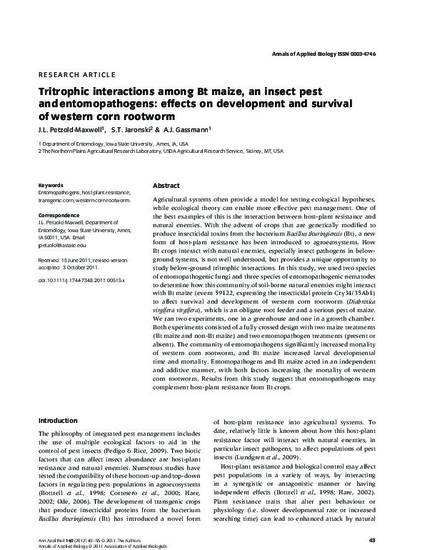
Agricultural systems often provide a model for testing ecological hypotheses, while ecological theory can enable more effective pest management. One of the best examples of this is the interaction between host-plant resistance and natural enemies. With the advent of crops that are genetically modified to produce insecticidal toxins from the bacterium Bacillus thuringiensis (Bt), a new form of host-plant resistance has been introduced to agroecosystems. How Bt crops interact with natural enemies, especially insect pathogens in below-ground systems, is not well understood, but provides a unique opportunity to study below-ground tritrophic interactions. In this study, we used two species of entomopathogenic fungi and three species of entomopathogenic nematodes to determine how this community of soil-borne natural enemies might interact with Bt maize (event 59122, expressing the insecticidal protein Cry34/35Ab1) to affect survival and development of western corn rootworm (Diabrotica virgifera virgifera), which is an obligate root feeder and a serious pest of maize. We ran two experiments, one in a greenhouse and one in a growth chamber. Both experiments consisted of a fully crossed design with two maize treatments (Bt maize and non-Bt maize) and two entomopathogen treatments (present or absent). The community of entomopathogens significantly increased mortality of western corn rootworm, and Bt maize increased larval developmental time and mortality. Entomopathogens and Bt maize acted in an independent and additive manner, with both factors increasing the mortality of western corn rootworm. Results from this study suggest that entomopathogens may complement host-plant resistance from Bt crops.
Available at: http://works.bepress.com/aaron_gassmann/6/

This article is from Annals of Applied Biology 160 (2012): 43, 10.1111/j.1744-7348.2011.00515.x.